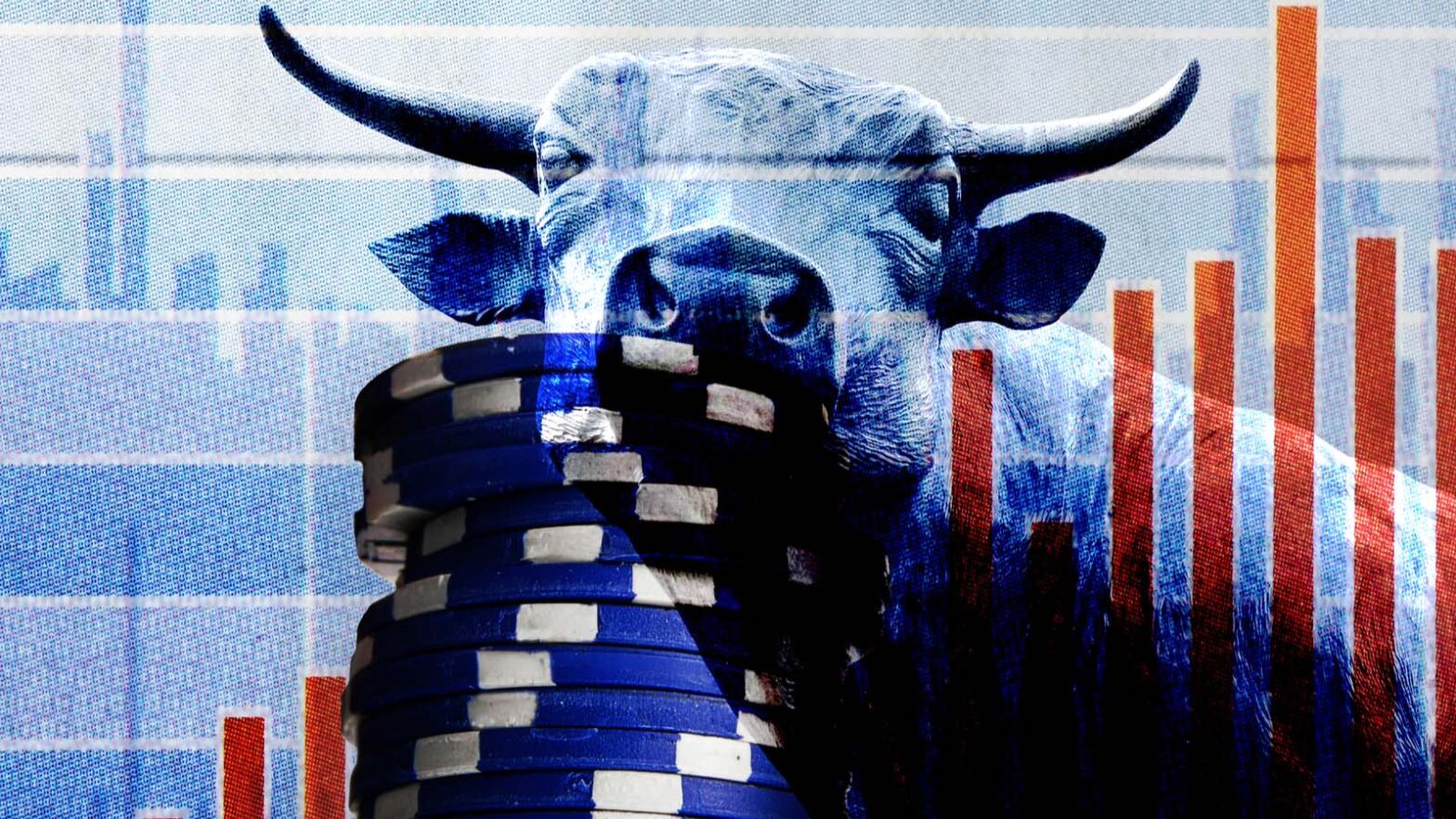In the wake of the 2022 stock market rout, astute investors should focus on top undervalued blue-chip stocks. All as these sturdy market contenders promise a silver lining with incredible upside potential for the long-term investor. After all, the current market turmoil, spurred by inflation concerns and Federal Reserve rate hikes, is unlikely to persist. Investing in undervalued blue-chip stocks is critical in finding hidden gems that preserve capital and deliver attractive long-term returns. While they might not glitter as brightly as growth stocks, the steadiness they can provide cannot be underestimated. These blue-chip stocks to buy serve as the cornerstone in a powerful portfolio. Hence, as we navigate through the storm, the spotlight is on screening for undervalued blue-chip stock picks that promise substantial returns for the long haul.
| DE | Deere | $357.21 |
| JNJ | Johnson & Johnson | $154.34 |
| WFC | Wells Fargo | $41.23 |
| TSLA | Tesla | $193.17 |
| XOM | Exxon Mobil | $104.97 |
| CVX | Chevron | $154.08 |
| IBM | IBM. | $128.89 |
Deere (DE)
% Below 52-week high: 19.6%
Deere (NYSE:DE) has solidified its spot as a leading manufacturer of agricultural and heavy-duty machinery. The firm’s robust offerings are rooted in supporting the country’s food supply chain, an area that will continue to grow rapidly, in line with population growth and rising incomes.
Deere’s strong position in diverse segments across forestry, diesel engines, and lawn care equipment effectively underscores its growth potential. With that said, it has had an excellent track record of long-term expansion with more than 12.4% and 19.5% revenue and EBITDA growth over the past five years on average. Recent results have held up remarkably well, beating estimates across both lines by healthy margins. In its most recent quarter, it beat revenue estimates by a whopping $1.2 billion and by $1.2 in its earnings per share.
Johnson & Johnson (JNJ)
% Below 52-week high: 14.5%
Johnson & Johnson (NYSE:JNJ) stands tall in the healthcare sector, symbolizing robust stability. It boasts a whopping 60-year unbroken chain of dividend growth, making it arguably the most popular dividend king out there. However, JNJ has seen its share of fluctuations, recently making the stock’s performance a mixed bag.
Earlier in the year, its talcum powder lawsuits shadowed its shares. However, the sun peeked through when almost a $9 billion settlement of these claims was announced in April, causing a sharp rally in the stock. Additionally, there is the spinoff of its consumer division in Kenvue in a bid to streamline operations and focus on its pharma and medical device divisions. Therefore, the short-term slowdown provides a golden opportunity for market enthusiasts to get a slice of JNJ at a compelling entry point.
Wells Fargo (WFC)
% Below 52-week high: 15.6%
Amid ongoing banking upheaval, investors are having it incredibly tough. The current trend appears to be selling first and asking questions later. Consequently, banking stocks have taken a monumental beating of late, effectively giving way to interesting value plays.
Wells Fargo (NYSE:WFC) boasts a strong banking franchise, emerging as an appealing value investment option. As the fourth-largest bank in the U.S. and with a nationwide presence, the bank has arguably the lowest deposit costs in the sector. Furthermore, its commitment to improving efficiency and streamlining operations reinforces its long-term stability. Additionally, WFC has been remarkably profitable, with year-over-year net income margins at more than 19% and cash from operations at over a whopping $34.3 billion, dwarfing the sector median of $153 million.
Tesla (TSLA)
% Below 52-week high: 41%
Despite the most earnings turbulent in April, EV pioneer Tesla (NASDAQ:TSLA) showed its mettle, delivering an impressive 422,875 vehicles in the first quarter, a massive leap from the 310,000 vehicles it delivered during the same period. Lower pricing may have dinged margins, but the delivery numbers speak volumes about Tesla’s market traction.
A glance at its financials affirms the strength of its balance sheet. Tesla reported a whopping $16 billion in cash and equivalents for the first quarter, complemented by a healthy operating cash flow of $2.5 billion. This demonstrates its formidable cash flow position, notwithstanding pricing pressures. Tesla’s trajectory remains mighty compelling, with an ambitious aim to sell 20 million vehicles annually through 2030. Add to this is the return of Maverick Elon Musk’s hands-on leadership, a fresh approach to advertising, and the upcoming Cybertruck launch.
Exxon Mobil (XOM)
% Below 52-week high: 11.3%
Riding high on record-breaking profits, Oil and gas giant Exxon Mobil (NYSE:XOM) cemented its financial prowess last year. It raked in an unparalleled $55.7 billion, sailing through the quarter on the back of robust production growth.
The fortune continued in the first quarter, with Exxon doubling its profits from the same period last year. On top of that, offshore developments and new refining facilities drove this prosperity, boosting gas and oil production by nearly 300,000 barrels per day. Its quarterly report highlighted earnings of $11.43 billion and earnings per share at $2.79. Moreover, as our resident InvestorPlace expert, Louis Navellier, remarks, the potential buyout of Pioneer Natural Resources could lead to Exxon’s largest deal since the historic Exxon-Mobil merger almost 25 years ago. Despite these positives, XOM stock offers a 22% upside from current price levels, according to Tipranks.
Chevron (CVX)
% Below 52-week high: 17.3%
I agree with my fellow InvestorPlace contributor Faisal Humayun, who believes that Chevron (NYSE:CVX) could be the next trillion-dollar company. The company is undoubtedly among the top value providers among oil and gas stocks. It’s imperative to note that valuation relies heavily on the potential and predictability of cash flow, and in that regard, Chevron is showing promising prospects. Based on its stellar first-quarter showing, it is expected to exit the year with rock-solid operating cash flows of more than $36 billion.
Its spectacular investment strategy further underpins the forward momentum in its stock. The energy titan plans to inject a massive $13 to $15 billion annually through 2027, promising an uptick in revenue and cash flow. Its investment-grade balance sheet is second to none, with cash and short-term investments at more than $15.8 billion, positioning it for potential growth-boosting acquisitions. Further sweetening the deal is Chevron’s investments in renewable energy assets present another avenue for value creation.
IBM (IBM)
% Below 52-week high: 16.3%
IBM (NYSE:IBM), affectionately known as “Big Blue,” has gone through a rather rough patch, with its share price dwindling by more than 35% in the past ten years. Such a trend might seem discouraging, but the tech titan refuses to lose ground. Marching ahead, it offers a high-dividend yield of more than 5.1%, standing tall among its tech counterparts.
Despite wrestling with restructures and navigating through various turnaround strategies, IBM has shown an unwavering commitment towards dividend growth for 28 consecutive years. This resilience is underpinned by the firm’s potent cash flow generation, where year-over-year free cash flow margin growth has increased by almost 100% while increasing by almost 22% over the past five years on average. Moreover, IBM stock trades at just 1.8 times forward sales estimates, which is 30% lower than the sector median.
On the publication date, Muslim Farooque did not have (directly or indirectly) any positions in the securities mentioned in this article. The opinions expressed in this article are those of the writer, subject to the InvestorPlace.com Publishing Guidelines.












